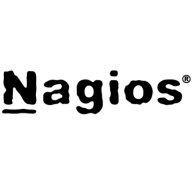

Splunk Observability Cloud and Nagios Core are leading IT monitoring solutions. Splunk has a competitive edge due to its advanced features, while Nagios excels in customization and flexibility.
Features: Splunk Observability Cloud offers comprehensive data integration with efficient log searching and rapid reporting capabilities. Its robust dashboards aid in data visualization and real-time issue detection. Splunk excels in application performance monitoring and security. Meanwhile, Nagios Core is known for its customization, providing essential alerts and modular configurations. It offers distributed monitoring and supports integration with various endpoints.
Room for Improvement: Splunk Observability Cloud needs improvement in pricing structure and reducing configuration complexity. Users suggest more intuitive navigation and expanded integration options. Enhancing support for continuous monitoring could also be beneficial. Nagios Core requires improvements in its user interface and setup processes, which can be complicated. It lacks scalability compared to modern solutions and involves cumbersome configuration management.
Ease of Deployment and Customer Service: Splunk Observability Cloud supports on-premises, hybrid, and cloud environments, providing deployment flexibility. It offers strong customer support but may face criticism for the speed and complexity of resolving technical issues. Nagios Core is favored for easy deployment due to its open-source nature, though it lacks a formal support structure, relying on community and internal resources.
Pricing and ROI: Splunk Observability Cloud is perceived as costly, especially with additional features and large data management needs. However, users report high ROI from enhanced capabilities. Nagios Core is cost-effective with minimal direct expenses due to its open-source model, making it appealing to budget-conscious organizations despite fewer advanced features.
Using Splunk has saved my organization about 30% of our budget compared to using multiple different monitoring products.
Anyone working in front-end management should recognize the market price to see the true value of end-user monitoring.
I have definitely seen a return on investment with Splunk Observability Cloud, particularly through how fast it has grown and how comfortable other teams are in relying on its outputs for monitoring and observability.
On a scale of 1 to 10, the customer service and technical support deserve a 10.
They have consistently helped us resolve any issues we've encountered.
They often require multiple questions, with five or six emails to get a response.
The solution is scalable.
We've used the solution across more than 250 people, including engineers.
As we are a growing company transitioning all our applications to the cloud, and with the increasing number of cloud-native applications, Splunk Observability Cloud will help us achieve digital resiliency and reduce our mean time to resolution.
I would rate its scalability a nine out of ten.
I tried many other solutions at work, however, in terms of Nagios, I haven't seen any disruption or downtime.
I would rate its stability a nine out of ten.
We rarely have problems accessing the dashboard or the page.
Unlike NetScout or regular agents for APM, RUM has many problems during the POC phase because customer environments vary widely.
The out-of-the-box customizable dashboards in Splunk Observability Cloud are very effective in showcasing IT performance to business leaders.
The next release of Splunk Observability Cloud should include a feature that makes it so that when looking at charts and dashboards, and also looking at one environment regardless of the product feature that you're in, APM, infrastructure, RUM, the environment that is chosen in the first location when you sign into Splunk Observability Cloud needs to stay persistent all the way through.
There is room for improvement in the alerting system, which is complicated and has less documentation available.
Splunk is a bit expensive since it charges based on the indexing rate of data.
It is expensive, especially when there are other vendors that offer something similar for much cheaper.
It appears to be expensive compared to competitors.
You can monitor anything.
Splunk provides advanced notifications of roadblocks in the application, which helps us to improve and avoid impacts during high-volume days.
For troubleshooting, we can detect problems in seconds, which is particularly helpful for digital teams.
It offers unified visibility for logs, metrics, and traces.
| Product | Market Share (%) |
|---|---|
| Splunk Observability Cloud | 1.2% |
| Nagios Core | 2.5% |
| Other | 96.3% |


| Company Size | Count |
|---|---|
| Small Business | 20 |
| Midsize Enterprise | 11 |
| Large Enterprise | 22 |
| Company Size | Count |
|---|---|
| Small Business | 20 |
| Midsize Enterprise | 10 |
| Large Enterprise | 43 |
This is IT infrastructure monitoring's industry-standard, open-source core. Free without professional support services.
Splunk Observability Cloud offers sophisticated log searching, data integration, and customizable dashboards. With rapid deployment and ease of use, this cloud service enhances monitoring capabilities across IT infrastructures for comprehensive end-to-end visibility.
Focused on enhancing performance management and security, Splunk Observability Cloud supports environments through its data visualization and analysis tools. Users appreciate its robust application performance monitoring and troubleshooting insights. However, improvements in integrations, interface customization, scalability, and automation are needed. Users find value in its capabilities for infrastructure and network monitoring, as well as log analytics, albeit cost considerations and better documentation are desired. Enhancements in real-time monitoring and network protection are also noted as areas for development.
What are the key features?In industries, Splunk Observability Cloud is implemented for security management by analyzing logs from detection systems, offering real-time alerts and troubleshooting for cloud-native applications. It is leveraged for machine data analysis, improving infrastructure visibility and supporting network and application performance management efforts.
We monitor all Network Monitoring Software reviews to prevent fraudulent reviews and keep review quality high. We do not post reviews by company employees or direct competitors. We validate each review for authenticity via cross-reference with LinkedIn, and personal follow-up with the reviewer when necessary.